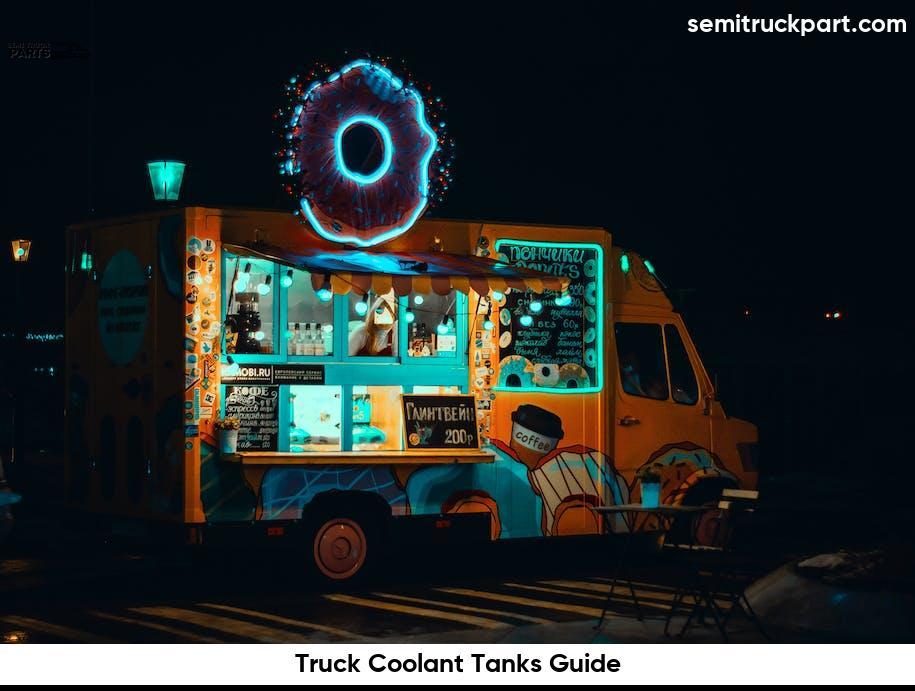Looking for guidance on truck coolant tanks? Here’s a comprehensive guide to help you understand all about them, from maintenance to troubleshooting.
Truck coolant tanks are an essential component of a vehicle’s cooling system, responsible for regulating the temperature of the engine and preventing overheating. This guide aims to provide valuable insights and information on truck coolant tanks, their functions, types, maintenance, and replacement. Whether you are a truck owner, mechanic, or simply interested in understanding more about coolant tanks, this guide will serve as a comprehensive resource. From discussing the importance of coolant tanks to exploring various types available in the market, this guide will equip you with the knowledge needed to make informed decisions regarding your truck’s cooling system. Stay tuned for expert tips, troubleshooting advice, and recommendations on choosing the right coolant tank for your truck.
The Ultimate Guide to Truck Coolant Tanks: Everything You Need to Know for Optimal Performance
Maintaining a properly functioning coolant system in your truck is essential for optimal performance and longevity of your vehicle. A key component of this system is the coolant tank, which plays a vital role in regulating the temperature and preventing overheating. In this guide, we will cover everything you need to know about truck coolant tanks.
- Types of Coolant Tanks: There are different types of coolant tanks available in the market, including pressurized and non-pressurized tanks. Pressurized coolant tanks are commonly found in modern trucks and are designed to withstand higher temperatures and pressures. Non-pressurized tanks, on the other hand, are typically used in older truck models.
- Material: Coolant tanks are commonly made from plastic or metal. Plastic coolant tanks offer advantages such as resistance to corrosion, lightweight construction, and ease of installation. Metal coolant tanks, on the other hand, are known for their durability and ability to withstand high temperatures.
- Capacity: The capacity of the coolant tank determines its ability to store an adequate amount of coolant for efficient cooling. The capacity requirements vary depending on the size and cooling needs of your truck. It is important to choose a coolant tank with a sufficient capacity to meet your vehicle’s demands.
- Installation: Proper installation of the coolant tank is crucial for its optimal performance. It is recommended to consult the manufacturer’s instructions or seek professional assistance during installation to ensure the tank is securely attached and all connections are tight.
- Signs of Malfunction: It is important to be aware of the signs that indicate a malfunctioning coolant tank. These may include coolant leaks, overheating, unusual noises, or a decrease in coolant level. If you notice any of these signs, it is crucial to address the issue promptly to prevent further damage to your truck’s engine.
Top Tips for Maintaining and Choosing the Right Coolant Tank for Your Truck
Maintaining a well-functioning coolant tank is essential for the proper operation and longevity of your truck’s cooling system. Choosing the right coolant tank and following proper maintenance practices can help prevent overheating and costly repairs. Here are some top tips to keep in mind when it comes to maintaining and selecting the right coolant tank for your truck:
- Choose the Correct Coolant Tank: When selecting a coolant tank, make sure to choose one specifically designed for your truck’s make and model. Consider factors such as capacity, material, and compatibility with your truck’s cooling system.
- Inspect for Leaks: Regularly inspect your coolant tank for any signs of leaks or cracks. Leaks can lead to coolant loss and result in engine overheating. If you notice any leaks, have them repaired promptly to prevent further damage.
- Flush and Replace Coolant: Over time, coolant can become contaminated with debris and lose its effectiveness. It is important to flush and replace the coolant at recommended intervals to ensure optimal performance of your cooling system.
By following these top tips for maintenance and selecting the right coolant tank for your truck, you can ensure efficient cooling, prevent overheating, and prolong the life of your vehicle’s engine.
The Importance of Truck Coolant Tanks: How They Keep Your Engine Running Smoothly
Overall, the truck coolant tank plays a crucial role in maintaining the engine’s temperature and preventing overheating. By storing and supplying coolant, maintaining the optimal coolant level, purging air bubbles, and acting as a pressure release valve, it ensures that your truck’s engine can operate smoothly and efficiently.
Common Issues with Truck Coolant Tanks and How to Solve Them
| Common Issue | Solution |
|---|---|
| Coolant Leaks | |
| Cracked/Bulging Coolant Tank | If the coolant tank shows signs of cracks or bulging, it needs to be replaced immediately. Continued use of a damaged tank can lead to coolant leaks and engine overheating. |
| Contaminated Coolant | If the coolant appears discolored or has a foul odor, it may be contaminated. Flushing and replacing the coolant is necessary to prevent engine damage. Check for any underlying issues that may have caused the contamination. |
| Improper Coolant Level | |
| Inadequate Coolant Flow | If the coolant does not circulate properly, the engine may overheat. Check for blockages or restrictions in the hoses and radiator. Clean or replace any clogged components to restore proper coolant flow. |
By being aware of these common issues with truck coolant tanks and their respective solutions, you can ensure the longevity and optimal performance of your truck’s coolant system. Regular maintenance, inspection, and prompt resolution of any problems are key to keeping your engine running smoothly.
Stay Cool on the Road: A Comprehensive Look at Truck Coolant Tanks
Truck coolant tanks play a vital role in the proper functioning of a truck’s cooling system. These tanks store and circulate coolant, helping to regulate the engine temperature and prevent overheating. Here are some key points to consider when it comes to truck coolant tanks:
- Material: Truck coolant tanks are typically made from durable materials such as plastic or metal. The choice of material depends on factors such as cost, durability, and heat resistance.
- Capacity: The capacity of the coolant tank determines how much coolant it can store. It is important to choose a tank with sufficient capacity to meet the cooling needs of your specific truck.
- Design: Coolant tanks come in various designs, including pressurized and non-pressurized tanks. Pressurized tanks are commonly used in heavy-duty trucks as they help maintain a consistent coolant pressure.
- Maintenance: Regular maintenance of the coolant tank is crucial to ensure optimal performance. This includes checking for leaks, inspecting hoses and connections, and flushing the coolant system periodically.
- Compatibility: It is essential to choose a coolant tank that is compatible with the make and model of your truck. This ensures proper fitment and functionality.
By understanding these key factors, truck owners and operators can make informed decisions when selecting a coolant tank for their vehicles. Regular inspection and maintenance of the coolant tank can help prevent engine overheating and ensure a smooth and reliable performance on the road.
Choosing the Best Coolant Tank for Your Truck: Key Factors to Consider
Selecting the right coolant tank for your truck is crucial to keep the engine operating at optimal temperature and prevent overheating. When choosing a coolant tank, there are several key factors to consider:
- Material: Coolant tanks are made from various materials such as plastic, aluminum, or stainless steel. Each material has its own advantages in terms of durability, heat resistance, and cost.
- Capacity: The capacity of the coolant tank determines how much coolant it can hold. It is important to choose a tank with sufficient capacity to meet the cooling requirements of your truck’s engine.
- Design: Coolant tanks come in different designs, including pressurized and non-pressurized tanks. Pressurized tanks provide better coolant circulation and help maintain consistent pressure in the cooling system.
- Installation: Consider the ease of installation and any additional components or hardware required for mounting the coolant tank onto the truck.
- Cost and Warranty: Evaluate the cost of the coolant tank and compare warranties offered by different manufacturers. This will help you make an informed decision while considering your budget and long-term reliability.
By considering these key factors, you can choose the best coolant tank for your truck, ensuring efficient cooling and preventing engine damage from overheating. Regular maintenance and inspection of the coolant tank will also prolong its lifespan and keep your truck running smoothly on the road.


